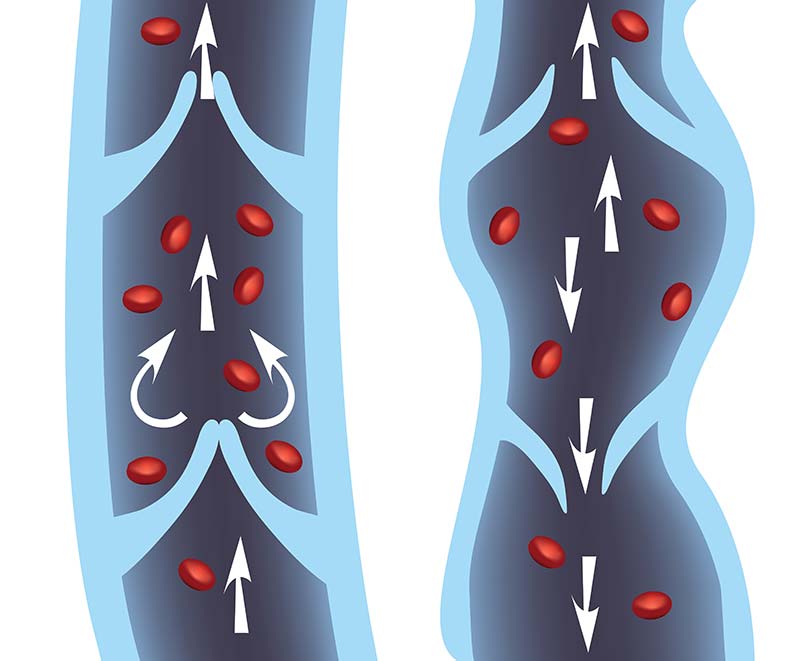Colorado Chronic Venous Disease (CVD) Treatment
Chronic Venous Disease (CVD) occurs after years of venous disease or abnormality. This typically occurs in lower limb veins. CVD can either occur after years of untreated venous insufficiency or reflux or as a result of obstruction or chronic venous scarring from an untreated deep vein thrombosis (DVT).
- About 50% of women and 40% of men in the United States suffer from some type of vein problem. ("EPublications." Varicose Veins and Spider Veins Fact Sheet. Ed. Robert J. Min. Women's Health, U.S. Department of Health and Human Services, 16 July 2012. Web. 18 June 2015.)
- Between 60 and 80 percent of leg ulcers are related to the venous system. (Nicolaides AN. Investigation of chronic venous insufficiency. A consensus statement. Circulation 2014; 102(20):e126-63)

Signs and Symptoms
- Leg skin color changes/browning of skin
- Development of thicker skin in legs
- Skin that is warm to the touch in the area that is swollen
- Leg ulcers, especially around the ankles
- Phlebitis
- Personal history of DVTs
- Personal history of varicose veins
- Recurrent leg infections
- Varicose veins and spider veins
- Itchy legs, leg swelling and leg pain/weakness/cramps
Risk Factors
- More common in women than men
- Over the age of 50 years
- Tall height
- Sedentary lifestyle/limited mobility
- Obesity
- Pregnancy
- Venous obstruction, thrombosis, or varicose veins
Detection
An ultrasound scan of the affected area can detect reflux (backward flow of blood) or obstruction usually from chronic venous scarring.
Treatment Options
Most vein diseases are not considered to be life-threatening and a variety of techniques may be used to pooling of blood or chronic venous hypertension.
- Compression Therapy- Garments that apply pressure to the extremities.
- Medication- Often used in conjunction with compression therapy and when leg ulcers are present.
- Chemical Therapy- Chemicals are injected into the veins closing them down so they no longer transport blood. The body will compensate to transport blood back to the heart through healthy veins instead.
- Surgery- Angioplasty or stent of obstructed veins.
Call To Schedule An Appointment
303-539-0736